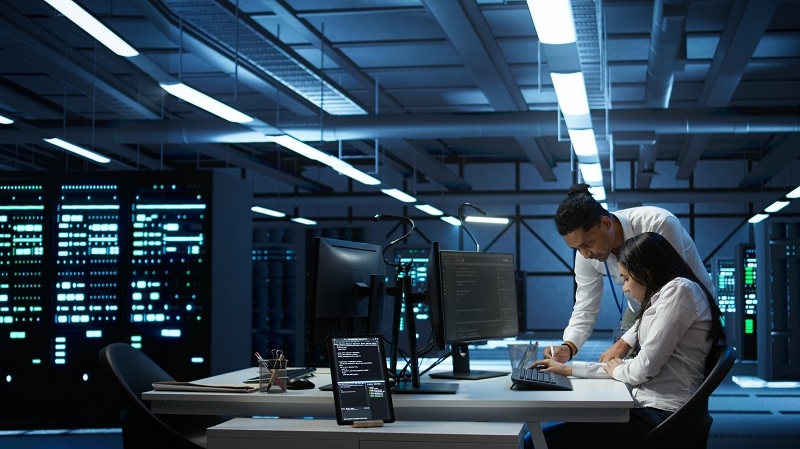
Maintaining a healthy virtual backbone is non-negotiable for current agencies. IT infrastructure maintenance plays an important role in maintaining systems operational, secure, and scalable. Without it, companies risk performance degradation, surprising downtime, or even permanent data loss. In today’s competitive tech landscape, agencies that prioritize ordinary IT audits, observe clever preventive maintenance suggestions, and exercise consistent hardware and software maintenance gain a big advantage.
Whether you use a worldwide company or a nearby records center, IT infrastructure protection ensures uptime, machine stability, and business continuity. This complete manual will explain why it matters, how to put it into force effectively, and the high-quality practices in information management USA and maintaining community structures for long-term fulfillment.
IT infrastructure protection involves the proactive care of all physical and digital assets inside an enterprise’s IT environment. This consists of servers, garage structures, a networking system, software applications, information facilities, and safety protocols.
The intention is to make sure that structures are continually functioning optimally, resilient to screw ups, and adaptable to evolving needs. It encompasses routine updates, patching, diagnostics, enhancements, and overall performance tracking.
Routine regular IT audits are the spine of effective IT infrastructure renovation. They help companies investigate the modern-day nation in their era stack, become aware of vulnerabilities, and develop strategies to cope with them proactively.
Regular IT audits help businesses in the US run more smoothly, have more uptime, and experience fewer catastrophic failures.
Reactive chaos is avoided by companies through active support. The IT teams should follow the preventive security guidelines to see problems before they fall into their hand.
IT teams can reduce the cost of maintenance and guarantee the continuity of the business itself ahead of unexpected circumstances by following the preventive protective recommendations.
One of the primary reasons for preventable IT failure is neglecting hardware and software upgrades. Over time, physical assets go to pot, and old software program poses a protection risk. Frequent maintenance ensures that each element paintings well together.
Maintain Hardware Maintenance
Software Upkeep
Keeping systems up-to-date now not only improves performance however extensively reduces the danger of downtime or important failures. Businesses that prioritize hardware and software renovation incur the cost of their tech investments.

For U.S.-based businesses, records center management USA poses precise challenges. From power outages and temperature fluctuations to cybersecurity threats and faraway get right of entry to, handling big-scale records environments requires consistent vigilance.
The most desirable general performance, dependence, and safety of significant IT infrastructure is secured through green statistics and mid-administration. Environmental management, including the regulation of moisture and temperature, is one of the essential factors that protect hardware from physical damage. By using backup structures and redundant power elements, power control is important for uptime. While community connection ensures pure information transfer and reduces the delay, it helps to monitor, managers allow leaders to track server performance, use, and health.
Unauthorized entry is prevented through physical safety measures that include biometric structures, which achieve entry control and monitoring. Plans for disaster recovery and backup of documents should also be prepared for unforeseen failures. Scalability is supported, operational performance is improved, and human error is decreased through the use of automation and centralized control tools.
Compliance with standards with HIPAA, SOC 2, and ISO 27001 is important for the center's control of data in the United States. These centers are completely operational and obedient methods that are for constant updates and strict maintenance of the IT infrastructure.
An unseen cable, a slow router, or a misunderstood switch can bring the entire operation to a stop. This is why maintaining social systems is a basic pillar of IT infrastructure protection.
Companies that hold social systems have a simple task more reliable connection for high general performance, low power outages, and cloud and rude and rude structures.
Even a few minutes of downtime could have a long way-achieving consequences. For instance:
It makes sense to invest in the steady maintenance of the IT infrastructure to avoid downtime. It helps smooth operations, safeguards your popularity, and keeps enterprise continuity.
Maintaining a reliable IT environment is crucial and cannot be overlooked, from routine IT audits and recommendations for preventive protection to appropriate hardware and software upkeep. Proactive IT infrastructure maintenance reduces downtime, avoids costly breakdowns, and extends machine life, whether you're managing records center management or business systems in the USA.
Companies that prioritize keeping community systems and other middle IT features can confidently navigate virtual transformation, cyber threats, and rapid increase without interruption.
The key takeaway: If you need to defend your enterprise from disruption, don’t look forward to something to interrupt—put money into clever, ongoing IT infrastructure renovation nowadays.
This content was created by AI